As organizations plan and budget for compensation increases in the coming year, they are increasingly designing their compensation programs in the context of a total rewards strategy that takes into account pay, benefits, career paths, and work/life balance. So, we’ve compiled a review of 2015 compensation trends in the workplace.
Mercer’s Ilene Siscovick, partner and the leader of the human capital business for the Pacific Northwest, and Howard Levine, partner in the talent business, visited TemPositions’ HR Roundtable Series on Thursday, September 18. They discussed current compensation practices and big-picture trends, as well as related human resources and talent issues. They presented Mercer’s results from its most recent 2014-2015 compensation-planning survey, and drew upon this research to delve deeper into performance management best practices.
For more insights and perspectives on managing the workplace in addition to 2105 compensation trends, discover TemPositions’ blog.
Levine shared that only 5 percent of organizations that participated in the Mercer survey feel that their performance management programs provide “exceptional value.”
Organizations have had essentially the same distribution of performance ratings since 2011, despite efforts to implement greater differentiation in pay increases. However, they have been able to realize greater differentiation in bonus awards (as opposed to salary awards) for top performers, with top performers earning about 1.5 times what an average performer does in incentive pay.
According to Mercer’s data, 2014 saw the highest number of promotions since 2009. Though the difference was not drastic, Levine noted that this may be indicative of a strengthening economy. He said that generally 6-7 percent of employees are promoted in any given year.
Another trend Levine mentioned is that organizations are making a greater proportion of their employees eligible for bonuses. About two-thirds of companies surveyed have employees who are eligible for bonuses at the clerical level.
The representatives from Mercer stressed that organizations should use a total rewards program to entice and reward their best-performing employees, as focusing solely on pay is not effective. Total rewards programs should be based on the needs and values of the top performers, not on average employees. In designing these compensation programs, organizations should take into account what their top employees value most, which can be influenced by generational differences. In designing effective total rewards programs, organizations should seek to use the knowledge and tools at their disposal to have a positive impact on business outcomes.
The Big Picture
Levine outlined the ways in which the business landscape has changed that are relevant to HR professionals.
Workers are increasingly unable to retire due to financial constraints, so remain in the job market longer. Another result of this has been an increasing prevalence of gradual retirement arrangements, which allow companies to retain the knowledge of seasoned employees while providing a pathway for those employees to continue generating some income.
The nature of work is changing, and people change jobs more frequently than in the past.
“People don’t come to work for you for a lifetime commitment, “ said Levine. “I feel 3-5 years is a good horizon a lot of companies look at now for keeping somebody engaged and motivated.”
The competition for talent is increasing. Levine said that while this is not true for every company, certain functions and skills are in high demand, and attracting and retaining people with the desired skills can pose a challenge. High-demand sectors include technology, engineering, sales, and marketing.
HR has also become more strategic, with increased use of evidence tools and data analytics.
Greater responsibility for health and wealth has been shifted onto employees, whether or not they have the skills to manage these things.
As business complexity increases and the environment becomes more risky, companies seek to avoid risk.
Consumers of benefits are becoming more empowered, and are demanding more information, clarity, and control.
Talent
Organizations are investing more in talent by increasing salaries, incentives, and other benefits. Levine pointed out several key issues with making the investment in talent pay off.
One challenge is sustaining an adequate pipeline of leaders and talent.
“More and more we hear from organizations that they have to do more leadership development, management development,” said Levine. “For companies that are growing quickly, it’s important to make sure younger managers have what it takes.” However, organizations are still more likely to buy talent than to grow it themselves, a practice Levine referred to as “the New York Yankees model.”
Once talent is developed or acquired, it’s important to engage and motivate to maximize performance. This must be balanced with business priorities, particularly the cost of rewards and HR programs.
There are several factors that can accelerate talent. Levine noted that education and training are especially appealing to Generation Y employees, as are other non-salary components such as flexibility, work-life balance, and recognition.
“For those younger people, they don’t have to be paid at the top of the market,” said Levine. “They will take less money if they van get three promotions in six years, get to work on interesting things, be mentored, get lots of performance feedback and recognition.”
Dissatisfaction with Performance Management
Taking the reins, Siscovick reiterated that only 5 percent of general industry feels that performance management programs are providing “exceptional value,” according to Mercer’s most recent survey.
Some of the reasons attendees mentioned for refreshing the performance management programs at their organizations included a need to measure how employees were cultivating new talent in addition to performing their regular duties, and moving to new technology platforms.
Best Practices
Siscovick shared some of the trends and practices that firms have been using to enhance pay-performance since 2013, including plans for 2015.
She said there has been more focus on guided distribution, and that many companies are moving away from forced ranking. She attributed the shift to younger employees, who tend to shy away from negative feedback. For example, Microsoft used to adhere to a strict guided distribution model, but revamped its performance management system in an effort to retain more employees.
There is also more focus on SMART goals and team goals – not only the “what,” but the “how.” Financial metrics are not the only relevant measure, and how something gets done matters too.
“Calibration is something we have really seen on the uptick,” said Siscovick, mentioning that those in management positions are scrutinizing their organizations and sorting their talent from stars on down to underperformers.
Training managers on how to evaluate and award performance, including how to have difficult conversations with employees, is important.
“All the research has shown that the relationship between the employee and the manager is one of the most important drivers of engagement,” Siscovick said.
Accountability for performance management is shifting from HR to leadership. Siscovick points that HR is merely an enabler, and that the talent is the asset of the business.
Upgrading technology to improve both analysis and efficiency can also be beneficial. Siscovick said it can help ease the process of evaluations for managers, and also engage employees by making benefits “more self-service.”
The use of workforce analytics is on the rise in HR departments. Such programs help ferret out actions that are statistically associated with the highest scores on performance management effectiveness. Siscovick names Peoplesoft, SAP, and Workday as examples of workforce analytic programs that can help HR departments dig into data and track associations.
What High-Performance Companies are Doing Differently
Siscovick gave several examples of high-performance companies and their emerging practices.
Medtronic
Medical device company Medtronic has eliminated annual ratings, and tries to match performance with the business quarter. Medtronic also includes both results and behaviors as part of its performance management, as well as a lot of discussion and calibration.
Juniper Networks
Networking equipment manufacturer Juniper Networks has eliminated forced distribution. The company has a semi-annual “conversation day,” during which managers meet with their employees and put on events to showcase career tracks with the company.
“They’ve really tried to get on top of employees leaving to go to other organizations by creating interesting opportunities,” said Siscovick.
Google
Google has tried to build better managers by adopting a data-driven model with eight attributes of effective managers, the most important of which is being a good coach. Performance reviews are based on both self-assessments and peer reviews.
Eliminating Ratings
Benefits
Getting rid of ratings can help create a climate of engagement, and dispel anxiety and fear. High performance may become more intrinsically driven, especially among younger workers. The absence of labels may diminish cognitive biases, such as the halo effect. Eliminating ratings can also help manager feedback and conversations be more constructive.
Drawbacks
On the downside, ambiguity may create anxiety among more numbers-focused people. It can also make it easier for to shy away from confrontation and giving honest feedback, which Siscovick emphasizes as being of utmost importance. For larger organizations, scalability may be a problem. It also puts more pressure on the assessment to be rigorous. An overly complex system may make it difficult to allocate both consequences and rewards in an equitable manner. Siscovick notes that having performance ratings can be a defense against charges of pay inequity, as well as make it easier for the organization to spot such inequities itself. Eliminating them makes these things more difficult.
None of the attendees’ organizations had eliminated performance ratings. There was a general consensus that face-to-face conversation was the most important part of performance management in the absence of ratings.
Mercer’s Compensation Planning Survey
Levine elaborated on the breakdown of Mercer’s 2014-2015 U.S. Compensation Planning Survey. 1,510 companies participated in the survey. Half of those companies were publicly traded, 26 percent were privately help, 18 percent were non-profits, and the remaining 5 percent were state-owned enterprises or joint ventures.
The survey encompassed a variety of industries. Most prominent among them were non-financial services (24 percent), energy (11 percent), other non-manufacturing (11 percent) and high tech (10 percent). The data included companies of various sizes.
Pay-for-Performance Ratings
According to Mercer’s data, about half of companies have a five-point scale for performance ratings, Levine said. Among Roundtable attendees, slightly fewer than half said that their companies used five-point scales as well. Mercer’s data show that the ratings distributions have remained consistent over the last few years.
“It’s not a bell-shaped curve,” said Levine. 54-57 percent of employees from the companies surveyed fell in the middle category, with 25-30 percent in the above-average category, and 7-8 percent in the highest-ranking category.
Levine expressed surprise that the percentage ranking in the “walk-on-water” category was not higher, but said that many companies consider the middle/average category to be a solid rating, and try to communicate that to their employees.
The percentage ranked in the lowest category hovered between 2-3 percent, with the remaining 7-8 percent ranking as below average. Levine said that managers are often reluctant to have difficult conversations and give their subpar employees lower ratings. He cautioned that a reluctance to hand out lower performance ratings can limit the rewards available to higher performers.
“When it comes to increases, there’s just not enough money left over to take care of the top 7-8 percent,” Levine explained.
“In my premises, companies manage their compensation programs for the average performer, when they should be trying to do more for these people,” he said, referring to the top performers. He stressed that top performers were most likely to help companies be successful, but are at risk of departing for greener pastures if not sufficiently engaged and rewarded.
Pay-for-Performance Base Salary Increases
Base salary increases have grown slowly, from 2.3 percent in 2010 to a projected 3 percent for 2015. The energy sector, including oil and gas, is poised to lead the way with increases in 2015, with a projected 3.3 percent base salary increase. Though this sector often sees higher increases than others, Levine said this is the first time he has seen the increase be less than 4 percent. He said that variations by regions would be minimal for most sectors.
Actual base salary increases tend to be slightly lower than what companies project each year. Levine noted that about one-third of companies froze salaries during the recession, but things have mostly reverted to business as usual, with only 1-2 percent of companies surveyed currently undergoing salary freezes.
“No matter how creative you are with that 3 percent, you’re not going to win the hearts and minds of your employees, so you need to take much more of a total rewards approach to engage and motivate your people,” said Levine.
Base Salary Increases and Performance Ratings
Mercer’s data shed light on how base salary increases related to performance ratings on a five-point scale. In 2014, average performers received a 2.7 percent increase. Above-average performers saw a 3.7 percent increase, while top performers saw a 4.8 percent increase. Below-average performers got a .9 percent increase.
Levine said that though many companies work hard to allocate and calculate increases for top performers, they are often seen as insufficient by employees, especially younger ones. This a a major reason that he advocates a total rewards approach.
“You have to do all kinds of other things for these people, in terms of having them work on exciting projects, perhaps you accelerate their promotions, maybe they get to go to some special leadership things and meet with the CEO,” Levine suggested. “Whatever it is, you have to take care of them, or else they’re going to leave.”
He mentioned that total rewards statements are a good way for companies to show employees the value of what they offer, in terms of pay and beyond.
One bright spot is that inflation rates have been low in recent years, and base pay increases have kept slightly ahead of the cost of living.
Pay-for-Performance Incentives
When it comes to bonuses, top performers are getting about 1.5 percent more than average performers. For example, if the target bonus for average employees is 20 percent of base salary, the target for top performers is around 30 percent.
From executives on down to trades, actual payouts of bonuses as a percentage of base salaries mostly matched up with targets. As a percentage of base salary, executive bonuses were 40 percent. Those of management were 18 percent. Employees at the professional level received 10 percent, while those at the clerical and trade levels each received 5 percent.
Almost all executives and management were eligible for bonuses, and most of professional level employees (81 percent) were as well. 65 percent of clerical level employees were eligible for bonuses, a proportion that has grown in recent years.
Annual Incentive and Promotion Trends
Mercer’s data showed that more employees further down the chain of command are becoming eligible for incentives, and that the target payout levels for those incentives have increased. Since 2013, 9 percent of organizations increased the number of employee levels eligible for short-term bonuses, while only 3 percent decreased the number of levels eligible. 11 percent of organizations have increased their target payout levels, while 4 percent of organizations have decreased targets.
Incentive-based compensation allows companies to control costs more easily because they can expand and contract expenditures depending on the company’s performance, Levine pointed out.
6.9 percent of employees were promoted in 2014, a slight increase from recent years. Mercer’s data showed that promotions typically come with a 6-10 percent increase in pay.
“When people get promoted, they should get a nice bump, because they’re not going to get promoted that often,” said Levine.
Focus and Best Practices for 2015
Siscovick took the floor again to advise attendees on the best course of action for the coming year.
Confirm your organization’s pay-for-performance strategy.
Siscovick advised going over data, getting a clear picture of current practices, and discussing any changes.
Build manager skills in making pay decisions.
“Your managers are the linchpin of your organization,” said Siscovick, noting that they are the ones ultimately responsible for executing pay-for-performance strategy. Online programs, role-playing, and manager training can assist with this.
Communicate to realize the value of rewards delivered.
Total rewards statements are a good way to do this, as are online portals and even apps. Siscovick mentioned that the latter two options are especially appealing to younger employees, who are accustomed to self-service.
Assess and assure readiness for pay equity challenges.
This is necessary given the ubiquity of litigation and rigorous guidelines from the Department of Labor, but also to understand what is going on within the organization. Siscovick recommends integrating pay equity into the statistical calculations that are part of the budgeting process, since this makes it easier to make any necessary changes.
Confirm the right technology to support rewards.
There is an abundance of technology available to help organizations handle everything from salary administration to modeling to making charts and graphs. Make sure yours has the best of what it needs.
Enhance your pay-for-performance analysis.
Data and analytics are essential to provide business insights and tell HR’s story.
Performance Management Analysis: Emerging Best Practices
New Employee Segments
This helps organizations identify trends, determine which employees are consistently doing well, and get a better picture of who is getting what in terms of rewards. Using analytics is helpful with this. With data in hand, organizations can determine how to move forward and make any necessary changes.
Reward for Performance
Organizations should look at whether and how they reward their employees who consistently earn high ratings. Are rewards bestowed via greater pay increases, bonuses, promotions, career opportunities, or other means? Do current rewards work to engage and retain valuable employees? Also, it is useful to determine how pay outliers are handled, particularly in cases where lower performers receive disproportionate pay increases.
Downgrades and Upgrades
Organizations can use data to determine the characteristics of employees who ratchet up their performance levels to the top tier, and those whose performances slip below average. Are there any correlations with manager ratings? What drives engagement and disengagement? HRIS data can be used to tie performance ratings over several years to evaluations of managers.
Sustained High Performance
In order to retain the most valuable employees, organizations must identify which people sustain high performances over longer periods of time (usually several years), and make sure that those employees have a great experience at the organization. They should differentiate these high-value employees with rewards related to pay, short and long-term incentives, career opportunities, and more.
Engaging Employees with Total Rewards
Siscovick reinfoced Mercer’s advocacy of a total rewards strategy to engage and retain employees. She encouraged attendees to visualize what a career look like in their organizations, and what “work life” looks like. An attendee mentioned that her organization had summer Fridays, which Siscovick cited as an example of “work life.”
Many HR departments are implementing newer, more advanced software. The data transfers that accompany this process can serve an an impetus for organizations to “clean up” their collections of job titles and more clearly define career paths. Siscovick noted that having a career path is of particular interest to younger workers. It also benefits organizations by prompting them to look toward the future and clarify their objectives. This process helps lay out an organization’s jobs, job families, job functions, competencies, and career paths.
In designing total rewards structures, Siscovick says organizations shouldn’t be afraid to try new things and “pivot” if the result falls short of the ideal.
Generational Differences
When it comes to total rewards compensation, different age groups tend to value different rewards. Siscovick stresses that not only is it important to take current employees’ motivations into account, but to think of compensation and rewards packages as something to market to desirable new candidates.
Boomers
This group tends to value more traditional, monetary means of compensation, such as salaries, bonuses, and retirement plans. They often put a higher priority on work than other age groups, and define themselves largely through their jobs.
Generation X
More family-centric than Boomers, this group values work-life balance. Flexible schedules, telecommuting, and other less traditional work arrangements often appeal. Gen-Xers want to be passionate about their work, and have a career path as well as benefits.
Generation Y/Millennials
More tech-savvy than preceding generations, Millennials crave connection – both to information and to people. Being recognized for achievement is important to them, as is feeling stimulated by their duties. This group generally responds well to positive recognition and lifestyle amenities.
When designing total rewards-based compensation, Siscovick encouraged companies to survey their employees to find out what is important to motivate and engage them, and to weigh trade-offs.
A type of total rewards scorecard or heat map showing how the company stacks up against the industry as a whole when it comes to rewards can be helpful in assessing the company’s total rewards program, as well as demonstrating value to decision-makers outside of HR.
Final Thoughts
3 percent is “the magic number” for salary increases this year, with slight variation depending on industry. Though this is highest it has been since the Great Recession, it isn’t enough to excite top performers.
“It’s a losing proposition to think you can excite your best performers solely by focusing on pay, especially if you don’t differentiate,” Siscovick said.
Companies should not base their total rewards on average performers, and instead should aim to excite and engage star employees, because they add the most value to the company. It is also wise for companies to look toward the future and take into account the preferences of the rising generation when designing their total rewards programs.
“There’s more than just the compensation lever, the benefit lever,” said Siscovick. “There are a lot of other levers you can use. It’s how you fit the whole thing together to have a really compelling proposition and have an impact on your business outcomes.”
Andrea Burzynski is a freelance writer based in New York. Reach her at andrea.burzynski@yahoo.com.
The HR Roundtable is a breakfast forum for human resources professionals in New York City sponsored by The TemPositions Group of Companies. TemPositions, one of the largest staffing companies in the New York tri-state area with operations in California, has been helping businesses with their short- and long-term staffing needs since 1962. Visit them online at www.tempositions.com or email them at info@tempositions.com.
Join the next HR Roundtable
Don’t miss our next discussion! Sign up for TemPositions’ next HR Roundtable here. This SHRM certified event will earn you or your HR team members 1.5 professional development credits.
Please note: the information reflected in this post is not official legal advice nor does it necessary reflect the opinions of the associated firms.






